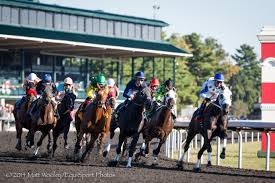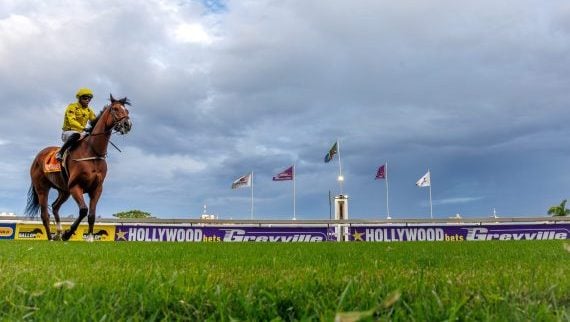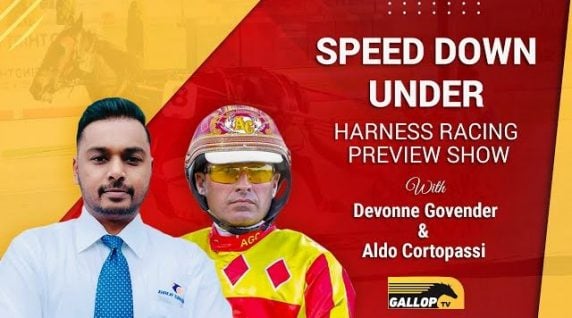Keeneland Racecourse’s main track will return to dirt this summer.
The removal of the track’s synthetic Polytrack surface and installation of a “state-of-the-art” dirt track and draining system is expected to begin May 19 and will be completed by Aug. 15. The track, which installed Polytrack in the summer of 2006, will re-open for training Sept. 1. Keeneland’s 2014 Fall Meet begins Oct. 3.
“Keeneland’s mission is to provide the highest level of racing possible, and in order to accomplish that goal going forward, a dirt surface is preferable,” Keeneland President and CEO Bill Thomason said. “This dirt track will be a “next-generation” surface, the most extensively researched and most sophisticated in North America. We believe that with the new materials and research available to us today we can build a world-class dirt track that is as safe as our synthetic surface for horses and riders. Their safety absolutely remains our top priority.”
Of what went into the decision to return to a conventional dirt track, Thomason said, “This is not a decision that we have undertaken lightly. From the outset of the synthetic surface installation in 2006, we have always said that this is a journey and not a destination. The racing landscape has changed, and for that reason we have an obligation to our horsemen and to our fans to evaluate where the industry is going.” He continued, “Owners and trainers, especially those who compete at the highest levels of the sport, overwhelmingly prefer dirt tracks. In keeping with our mission and the quality that is expected of Keeneland, we have to be more competitive in attracting the top horses and Triple Crown and Breeders’ Cup contenders and in hosting major racing events.”
Keeneland’s five-furlong training track will not be converted from Polytrack and will remain open during the summer. Thomason said that Keeneland will assist resident horsemen in locating adequate stall space during the construction period. Thoroughbred Daily News, 3 April
*
TDN Q & A: Keeneland’s Return to Dirt
Just before making the announcement that Keeneland would revert to a conventional dirt surface after eight years of Polytrack, Keeneland’s President and CEO Bill Thomason and Vice President of Racing Rogers Beasley sat down with the TDN’s Lucas Marquardt to discuss the rationale behind the move, what the new surface will look like, initial reaction by horsemen, and Keeneland’s work with Mick Peterson, executive director of the Racing Surfaces Testing Laboratory.
TDN: Keeneland set Fall Meet records for attendance the last three years and last year set a new mark for all-sources wagering. Likewise, the 2013 Spring Meet set records for wagering and attendance, while there was just one racing fatality over the year. In light of these figures, why did Keeneland decide to switch back to a conventional dirt track?
THOMASON: First, let me say we’ve been very proud of our Polytrack, and we want to make sure we say that up front. From when we installed it in 2006, it’s been an incredibly safe surface. It’s accomplished every objective that we’ve wanted for safety. We think it set the safety standard for racetracks around the country. Because of Polytrack, dirt surfaces around the country have become better, because they’ve been working to achieve the same standards we’ve set on synthetic. I know a lot of tracks around the country that have gone to great extremes to enhance and increase, through their maintenance procedures, the safety of their surfaces.
But if there’s one objective that it unfortunately didn’t achieve is that it didn’t become the predominant and prevalent racing surface around the country. So, when we looked at Keeneland’s mission of providing racing at the highest level, the one thing we were not able to do is attract some of the best horses, who were on track for the Triple Crown or Breeders’ Cup races, to our premier races. They just haven’t been coming here.
BEASLEY: Our staff and facilities speak for themselves as far as attracting people, and we don’t perceive that that will be affected. We’ll see if that’s right or wrong, but we believe we draw because of a combination of great racing, great facilities, are our personnel, who are second to none as far as taking care of our customers.
As far as handle goes, there’s no question that there will be days that it pours rain that we’ll lose horses to scratches and that handle will be affected, but we think the handle will continue to grow, because we think we’re going to attract the best horses. And we still expect to have full fields. We think we’ll be able to attract not just a few good horses, but a lot of them.
TDN: Tell us about the search for your new surface.
THOMASON: We’ve been spending a lot of time researching our next-generation surface, because we made the commitment long ago that, as we looked at this through the years, and as we concentrated our efforts over the past year, if we couldn’t find a surface that could reach the safety objectives that we got with our Polytrack–and were confident with the construction, materials and maintenance procedures–that we weren’t going to do it.
We’ve been looking at it diligently over the past year–the winters have been incredibly difficult for us to do anything–but in the end, the things that were most importance to us, we were able to gain that 100% confidence level. And when we got to that point, it didn’t make any sense for us to wait any longer.
TDN: What are the first steps in terms of converting the surface, and what can you tell us about the surface itself?
THOMASON: We’ll be able to use the existing macadam. We’ll take the Polytrack off, clean the surface, put a covering over the macadam, then build a layer over it that will allow the track to sheet drain. The surface that will be above the base layer is a material that’s been highly researched by Mick Peterson, who provides the research and consultation for most of the tracks on the East and West coasts. We’ve found a material that will be appropriate for our conditions and where we are, and most importantly, we’ve found a way to access this elaborate drainage system that we have under our Polytrack through rail drainage that’s going to allow our surface to drain quickly and more consistently than on other surfaces. It will be a state-of-the-art racing surface, and we’ll make a continual commitment to the surface itself. That’s the key. Moisture content, consistency of the material…all those things that go into making a track consistent. We’ll be using GPS technology to make sure we maintain the perfect sub-surface and the perfect cushion. All those things will add to element of safety for the track.
TDN: Some trainers, Todd Pletcher and Kiaran McLaughlin included, were passing over the Keeneland meets with their best horses. Were those trainers involved in the discussions to go back to dirt?
BEASLEY: We didn’t specifically talk to them, but we’ve had conversations with a lot of trainers over the last 18 months or so. But I think you’ll see Todd send some of his better runners, and I think you’ll see that with Kiaran and other trainers, as well.
TDN: There’s a sense that synthetic surfaces are unpopular with many horsemen. Was Keeneland getting a lot of complaints about the Polytrack?
BEASLEY: No, I wouldn’t say that. Those that like Polytrack, like it. If you called 10 trainers after you hang up with us today, you’ll find that those who have been successful on dirt prefer dirt, and those who have been successful on Poly will say, ‘Why are they doing this?’ But I think the vast majority of American horsemen are in favor of this.
TDN: One commonly heard complaint about synthetic tracks is that they’re expensive to maintain. Was that the case with Keeneland’s Polytrack?
BEASLEY: I don’t think we found it very expensive, though it did require more maintenance than we originally thought it would. But that never bothered us. It never bothers us to maintain our property, whether it’s the track or one of our buildings or anything else. That wasn’t our bottom-line concern. You do what’s right for the track. Mick Peterson came up before the meets every spring and fall and did testing, and he’d say the track was as good as it could possibly be. We didn’t have any complaints with the cost.
THOMASON: This has been the most heavily researched and tested track in the world, and we were continually maintaining and taking care of the Poly. But we don’t look at going to the dirt as a cost saver. If anything, we think it will increase the maintenance efforts we’re going to have to put into the track. The cost factors never really come into play at Keeneland. It’s always about doing the right thing and performing the best we can toward our mission of taking care of our horses, and our humans.
TDN: Keeneland April, like many boutique juvenile-in-training sales, has had a hard time attracting a large number of horses in recent years. Is it the hope that a move back to dirt will help attract more entries?
BEASLEY: That was never discussed, to be perfectly candid with you.
TDN: Obviously only a limited number of people knew about Wednesday’s announcement before it came. But what was the general reaction from people who did know?
BEASLEY: From the limited number of people that we had a conversation with, certainly the majority approved of this move. A couple people are disappointed, but they understand and are appreciative of the research that has gone into this decision. They understand this isn’t a knee-jerk decision, but any stretch of the imagination.
thoroughbreddailynews.com/shared








